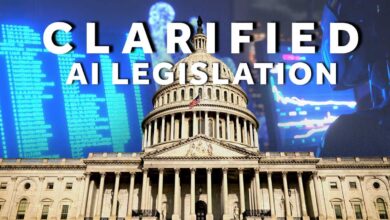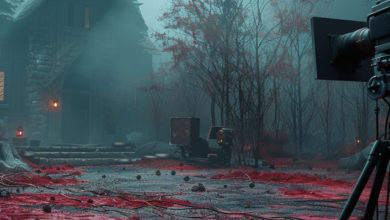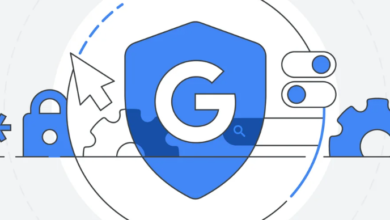Biggest AI Developments of 2024 So Far and What’s Ahead

“These cases, and others that are sure to follow, will direct the discourse surrounding Generative AI and IP. However, they only begin to scratch the surface of how the law will evolve to face the new challenges AI presents.”
As artificial intelligence (AI) becomes increasingly powerful, its applications continue to expand, and its use gains widespread adoption, new legal challenges in the intellectual property space come with it. From a simplified view, generative AI is the term used to describe algorithms that can create content such as images, written works, audio, and videos. These algorithms work by inputting similar types of content (i.e. “training”) from which the algorithm learns patterns. After a sufficient amount of training, the algorithm can create new content based on the patterns learned from its training.
This relatively new way of creating raises a myriad of legal issues, which are currently evolving alongside AI’s expanding capabilities. This article discusses some of the most significant AI developments in intellectual property law that have occurred so far in 2024, and what to watch for in the remaining half.
1. Generative AI and Copyright Challenges
Two critical questions raised by AI in the copyright space are (1) whether AI generated content is protected by copyright, and (2) whether using copyrighted content to train AI is a violation of the owner’s copyrights.
As to the first question, the U.S. Copyright Office takes a hardline stance that content output by generative AI is not copyrightable because it is not a work by a human author. However, the Copyright Office is open to the possibility that a work containing AI-generated material that “also contains sufficient human authorship” may support a copyright claim. Additionally, the Copyright Office confirmed that AI can be used as a tool in the creative process for an author to “create their works or to recast, transform, or adapt their expressive authorship.” This Guidance raises significant questions, and as result, questions will continue to be raised as to the metes and bounds of what “sufficient human authorship” is.
As to the second question, this is a hot topic in copyright law in 2024 and will likely continue to be for the foreseeable future. Because generative AI works by “learning” from the myriad of similar creative works that were used to train it, there are significant questions being raised in several ongoing litigations such as: Does using copyrighted material to train AI constitute copyright infringement? Or is it fair use? Is the output from the generative AI a derivative work?
The New York Times Case
The cases brought to date have begun to address these questions. For example, on December 27, 2023, the New York Times Company initiated a lawsuit against OpenAI for copyright infringement in the Southern District of New York, contending that OpenAI used millions of articles published by the Times to train its generative AI algorithm, ChatGPT. The Times contends that OpenAI infringed its copyrighted material when OpenAI used that material to train the ChatGPT algorithm. Additionally, the Times alleges that the output of ChatGPT is a derivative work—because, again, generative AI is at its core an algorithm trained using existing content to then output new content based on the patterns the algorithm learned from the existing content. In other words, ChatGPT is using the Times’ copyrighted content (and all the other copyrighted content used to train it) to merely output a remix of that same work. Unsurprisingly, OpenAI disputes the Times’ allegations and moved to dismiss in February 2024, and the Times has since requested leave to file an Amended Complaint. Each of these motions is still pending, and accordingly, this case will remain one to watch throughout the remainder of 2024.
The Times is not alone in its efforts to challenge generative AI—there are numerous ongoing cases addressing these issues. For example, in April 2024 a group of visual artists sued Google and its parent company, Alphabet in the Northern District of California for its alleged unauthorized use of copyrighted images in training its AI-powered image generator known as Imagen. (Zhang v Google, No. 3:24-cv-02531 (N.D.CA). As another example, in Thomson Reuters v. ROSS in the District of Delaware, a case that has had time to mature (trial is set for August 2024), Thompson Reuters alleges that ROSS unlawfully copied content from Thomson Reuter’s legal research platform Westlaw for the purpose of training its AI-based platform. (Thomson Reuters Enter. Centre GmbH et al v. ROSS Intelligence Inc., No. 1:20-cv-00613-SB).
2. Licensing Innovations
Generative AI’s ability to create works poses novel competitive threats in creative industries. One way in which AI is being used to accomplish this is by creating work utilizing (or even improving upon) a person’s voice, image, writing style, and other attributes and skills unique to that person. By way of relatively famous example, James Earl Jones has signed over the rights in his voice to be used by AI to create new dialogue for Darth Vader in the Star Wars universe. As a result, Darth Vader’s voice can continue for years to come without any involvement from Jones at all.
While Jones did enter into an agreement for AI to use his voice, not every AI is learning with permission, and thus, questions will inevitably be raised as to the scope of legal protection for a person’s unique attributes. For example, in 2023 an AI-generated song featuring Drake and The Weeknd made headlines, as it was nearly indistinguishable from the artists’ genuine work—despite the fact that neither artist had any involvement in creating it. More recently, a scuffle between actress Scarlett Johanssen and OpenAI ensued after OpenAI’s voice assistant product, named “Sky,” featured a voice eerily similar to hers.
The reaction to this use of AI has been to question how creatives can protect against this. Most notably, members of the Writers Guild of America and Screen Actors Guild took to the streets late last year to protest, among other things, the use of Generative AI in these creative spaces. At the close of the year, an agreement was reached offering various protections for member artists against the use of AI. Thus, at least with collective bargaining power, private parties can contractually protect themselves.
Of course, not all creatives seek to contractually limit the use of AI to compete—some seek the exact opposite, like Jones did with his Darth Vader voice. The results are that the person is compensated for the use of these attributes with little to no further investment of time and effort. Some models are, for example, licensing their likeness to AI Fashion, a platform that pays models to use their likenesses in AI-generated images to model clothing. Even the Screen Actors Guild has entertained such opportunities, despite their prior protests. In January, it announced an agreement reached with Replica Studios, an artificial intelligence (AI) voice technology company. Under this agreement, Replica Studios and voice over artists can work together to employ AI-generated versions of their voices in video game development and other interactive media projects.
Given the relative novelty of this issue, legal questions are certain to come with it, whether in the remainder of 2024 or beyond.
3. AI Patent Trends
Virtually every aspect of intellectual property law will be affected by AI, and patent law is no exception. The U.S. Patent and Trademark Office (USPTO) has already begun considering these issues and issued some guidance related to AI.
On February 13, 2024, the USPTO published “Inventorship Guidance for AI-Assisted Inventions” which confirmed that generative AI cannot be an inventor nor named as a joint inventor. However, that guidance also states that AI-assisted inventions are not categorically unpatentable. In determining patentability, the focus will be on whether a human inventor provided a “significant” contribution to the invention. In general, patent law requires that a patent name as inventors any persons who made a significant contribution to a claim in the patent. While it may seem under this rubric that an AI that made a significant contribution would be required to be named as an inventor—which would destroy the patentability since an AI may not be an inventor—the Office’s Guidance provides a way around this. Specifically, the USPTO’s position is that patent law requires only “the naming of the natural persons who invented or discovered the claimed invention” and thus, “the inability to list an AI system, used to create an invention, as a joint inventor does not render the invention unpatentable due to improper inventorship.”
It must be noted that the Office’s guidance “does not constitute substantive rulemaking and does not have the force and effect of law.” Accordingly, like the questions raised in relation to copyrightability of AI assisted content, the boundaries of what qualifies as a “significant” contribution remains to be determined. In other words, how much is enough? Only the courts or the legislature can make that determination, and it is only a matter of time before they do, whether that be this year or further down the line.
These cases, and others that are sure to follow, will direct the discourse surrounding Generative AI and IP.. However, they only begin to scratch the surface of how the law will evolve to face the new challenges AI presents.
Image Source: Deposit Photos
Image ID:63109787
Copyright:Rawpixel



